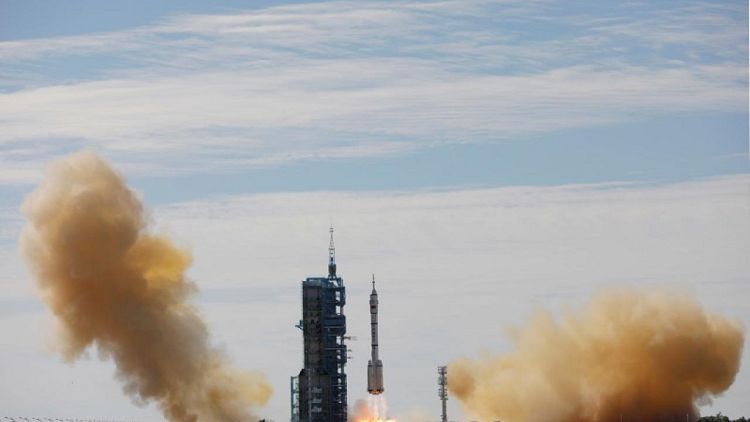BEIJING - China launched a spacecraft on Thursday carrying three astronauts to the main module of the country's space station, its first crewed mission in nearly five years.
China's first full-fledged space station is still under construction. When completed, it will be the only rival to the International Space Station (ISS) backed by the United States, Japan and Russia. China has never participated in the ISS.
Here is a timeline of key moments in Chinese space exploration:
July 19, 1964: China took its first official step into space, launching and recovering an experimental biological rocket carrying white mice.
April 24, 1970: The first Chinese satellite, Dong Fang Hong 1, was launched from the Jiuquan launch centre in the northwestern province of Gansu. That made China the fifth country to send satellites into orbit, following the Soviet Union, the United States, France and Japan.
Nov. 26, 1975: China launched its first recoverable satellite.
Nov. 20, 1999: China launched its first unmanned spacecraft, the Shenzhou-1.
Oct. 15, 2003: China became the third country after the United States and Russia to send a man into space with its own rocket. Astronaut Yang Liwei spent about 21 hours in space aboard the Shenzhou-5 spacecraft.
Oct. 12, 2005: China sent two men on a five-day flight on its Shenzhou-6 spacecraft.
Nov. 5, 2007: China's first lunar orbiter, Chang'e-1, entered the moon's orbit 12 days after takeoff.
Sept. 25, 2008: China's third manned spacecraft, Shenzhou-7, was launched into space, where an astronaut clambered out of the spacecraft for the nation's first space walk.
Oct. 1, 2010: China's second lunar exploration probe blasted off from a remote corner of the southwestern province of Sichuan.
Sept. 29, 2011: The Tiangong-1, or "Heavenly Palace 1", China's first space lab, was launched to carry out docking and orbiting experiments.
Nov. 3, 2011: China carried out its first docking exercise between two unmanned spacecraft, the Shenzhou-8 spacecraft and Tiangong-1 module, a key test to securing a long-term manned presence in space.
Dec. 14, 2013: China landed an unmanned spacecraft on the moon in the first "soft-landing" since 1976, joining the United States and the former Soviet Union in accomplishing the feat.
Sept. 15, 2016:China launched its second experimental space laboratory, the Tiangong-2, part of a broader plan to have a permanent manned space station in service around 2022.
Jan. 3, 2019: The Chang'e-4 lunar probe, launched in December, touched down on the far side of the moon. Previous spacecraft have flown over the far side but not landed on it.
June 23, 2020: China put into orbit its final Beidou satellite, completing a navigation network years in the making and setting the stage to challenge the U.S.-owned Global Positioning System (GPS).
July 23, 2020: China launched an unmanned probe to Mars in its first independent mission to another planet.
Nov. 24, 2020: China launched an uncrewed mission, the Chang'e-5, with the aim of collecting lunar material to help scientists learn more about the moon's origins.
Dec. 1, 2020: China landed the Chang'e-5 probe on the moon's surface.
April 29, 2021: China launched Tianhe, the first and largest of three modules of its upcoming space station.
May 15, 2021: China became the second country after the United States to land a robotic rover on the surface of Mars.
June 17, 2021: China launched the crewed Shenzhou-12 spacecraft to dock with Tianhe.












